Does the established format of the bird exhibition need a bit of a redesign? JIM HAYWARD JNR strongly believes so and sets out his ideas for clubs to consider.

I was inspired by this and, although I have never kept softbills, I’ve always tried to set up my cages and aviaries for both parrots and finches in a natural way. I’m sure if bird clubs put on shows with a section devoted to colourful and educational single- and double-breeder cages, this would really appeal to families. Local schools and colleges could also be sent an invite, especially kids studying biology or conservation. This would make the general public aware of the work many of us do to preserve species and old varieties, and that they too can help conserve birds by breeding them at home.
Over the years, I have often invited non-birdkeeping friends and hobbyists who own an aviary or pet bird to come along and view local bird club shows. At the show they have always quickly lost interest, because to people who are new to birdkeeping, rows of very similar looking canaries, budgies, zebra and Bengalese finches don’t stand out. They always notice birds with extremely different appearances, markings and shapes, but can’t, for instance, see any obvious differences between a Fife and a Border canary. Some friends have also remarked that it’s cruel to keep birds in small cages and I always have to explain that the cages are only for exhibition and the birds are kept in large breeder cages or aviaries between shows.
In stark contrast to most exhibitors’ tastes, it’s usually the most colourful birds such as rosellas, colour budgies and waxbills that hold their attention for longer. They almost never like birds with unnatural forms, such as Giboso canaries and modern exhibition budgies.
この記事は Cage & Aviary Birds の January 17, 2018 版に掲載されています。
7 日間の Magzter GOLD 無料トライアルを開始して、何千もの厳選されたプレミアム ストーリー、9,000 以上の雑誌や新聞にアクセスしてください。
すでに購読者です ? サインイン
この記事は Cage & Aviary Birds の January 17, 2018 版に掲載されています。
7 日間の Magzter GOLD 無料トライアルを開始して、何千もの厳選されたプレミアム ストーリー、9,000 以上の雑誌や新聞にアクセスしてください。
すでに購読者です? サインイン
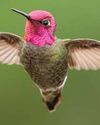
The World's Best-Known Hummingbird?
Intensively studied, the gem-like Anna’s hummingbird is a welcome visitor to the gardens of America’s most populous state: California. Bill Naylor investigates its life history
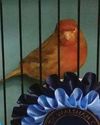
The charm of the English Cinnamon
Despite its long and complicated history, the true Cinnamon canary is still with us – in the hands of a tiny group of breeders. DONALD SKINNER-REID reckons it deserves wider appreciation
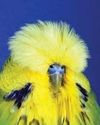
Spangles: a personal overview
FRED WRIGHT relates a budgie story of over-exploitation, consequent problems and abundant potential for the future

New converts to old breeds
Old and rare canaries have a reputation for adding fresh interest and challenge to the hobby. PETE HOOK and NICK JOY agree, and explain the birds’ charm to Dave Brown

Themed aviaries are a hit with the public at annual Stafford show
DECORATIVE AVIARY DISPLAYS from a CBS and an online bird keeping advice group were voted in the top three by visitors for the inaugural Stafford Aviary Competition.
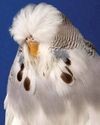
Pieds with potential
More than just a lesser variety, the dominant pied will introduce challenge and change into most studs, reckons CLIVE WAKEMAN. Here he discusses pairings to try and others to avoid

Club News
Welcome to the club and show pages – the bit that’s all about you Results: convention, specialist & rare and Breeder of the Year

Canaries Month by Month:
With Christmas around the corner, BRIAN KEENAN is well into his winter programme, and reckons he might deserve a nice outcross
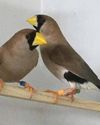
Smart Choice, Docile Nature
Dave Brown welcomes the masked grassfinch to his birdroom and shares advice on this lovely Australian species
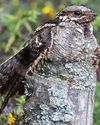
The truth about the ‘flying toad'
Odd local names and weird superstitions can’t hide the beauty and elegance of the nightjar, a species that has made a fascinating subject in a few zoo collections, reveals BILL NAYLOR